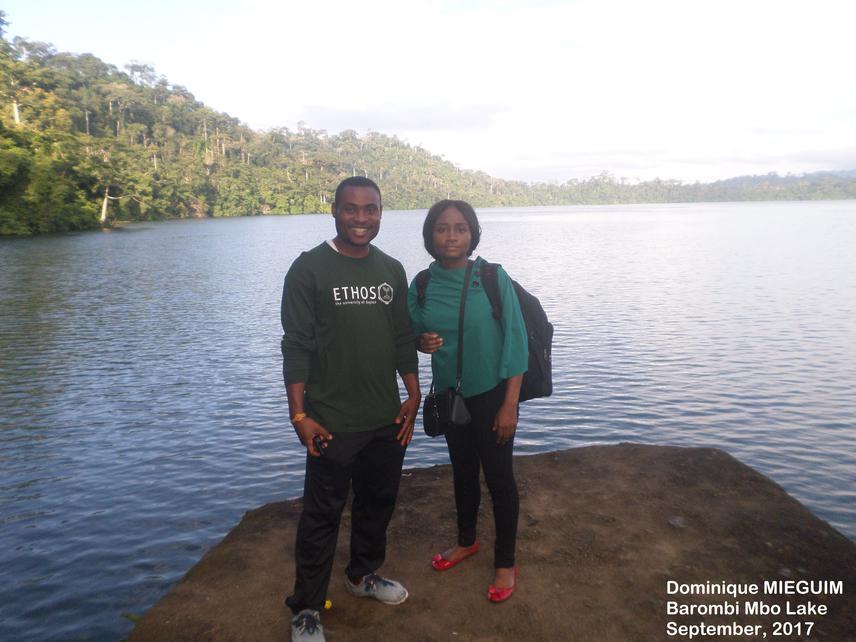Dominique Mieguim Ngninpogni
Barombi Mbo where this study will be conducted is one of the many crater lakes that dot the southern portion of Cameroon. This ecoregion is being altered by various anthropogenic activities, introduction of foreign species and seasonal variations.
This study intends to assess the impact of seasonal variations on the “Critically Endangered” endemics cichlids survival and by so doing help to formulate appropriate strategies for their conservation and rehabilitation. These species are: Konia eisentrauti, Konia dikume, Myaka myaka Pungu maclareni, Stomatepia mariae, Stomatepia pindu, Stomatepia mongo Sarotherodon caroli, Sarotherodon steinbachi, Sarotherodon linellii, Sarotherodon lohbergeri (IUCN Red List 2017).
Specifically, the study aims to provide information on seasonal distribution, relative abundance and condition factor of these cichlids fish; gather seasonally physico-chemical parameters of the lake and determine if these fluctuations underlying the maintenance of diversity in the multi-species community: a central issue of conservation biology and then, restoration practices.

Dominique, Barombi Mbo Lake, Sept 17.
Endemic species can be good indicators for monitoring the success of biodiversity management in a given area. The Barombi Mbo where this study will be conducted is one of the many crater lakes that dot the southern portion of Cameroon; an area with twelve endemics cichlids fish. Unfortunately, this ecoregion is being altered by various anthropogenic activities, introduction of foreign species, seasonal variations with advert effect on fish. This study intends to assess the impact of seasonal variations on fish survival and by so doing help to formulate appropriate strategies for their conservation and rehabilitation.
The study will be conducted from October 2017 to October 2018 with the help of two professional fishermen and two assistants. Fish sampling will be then carried out twice during one season during 2 consecutive days for a total of 16 sampling events. The area will be divided by 2 sampling units: the catchment and the lake itself. On each unit, sampling will start from a random point and then proceeded at evenly distributed intervals along the margin of the water body. The mark-and-recapture method (Peterson and Cederholm, 1984) will be used to tabulate data by species, size, occurrence and then, estimate population of each species (abundance, density). Habitat quality will be examined seasonally as described by (Matillano and Atrero, 2013): water and air temperature, water transparency, pH and salinity will be measured in situ using a mercury thermometer attached within a sampling bottle, a Secchi disk (diameter = 30 cm) a portable pH meter and a conductivity meter consecutively. Dissolved oxygen will be measured using a calibrated dissolved oxygen sensor.
The weight and height will be measure and the Fulton’s condition factor will be calculated from the equation K = 100W/L (Richard et al., 2006), where W is the weight of fish (g) and L is the total length of fish (cm). For each ecological category, models will be built with the number of fish captured as the response variable and the sampling unit (lake, catchment, transect), season, temperature (°C), salinity, depth (m) as independent variables.
At the end of the study, a small workshop will be organised in order to explain to the fishermen and the local population, the results obtain in a simple way and the importance of a sustainable fishing and how to manage fisheries with seasonal changes of climate.